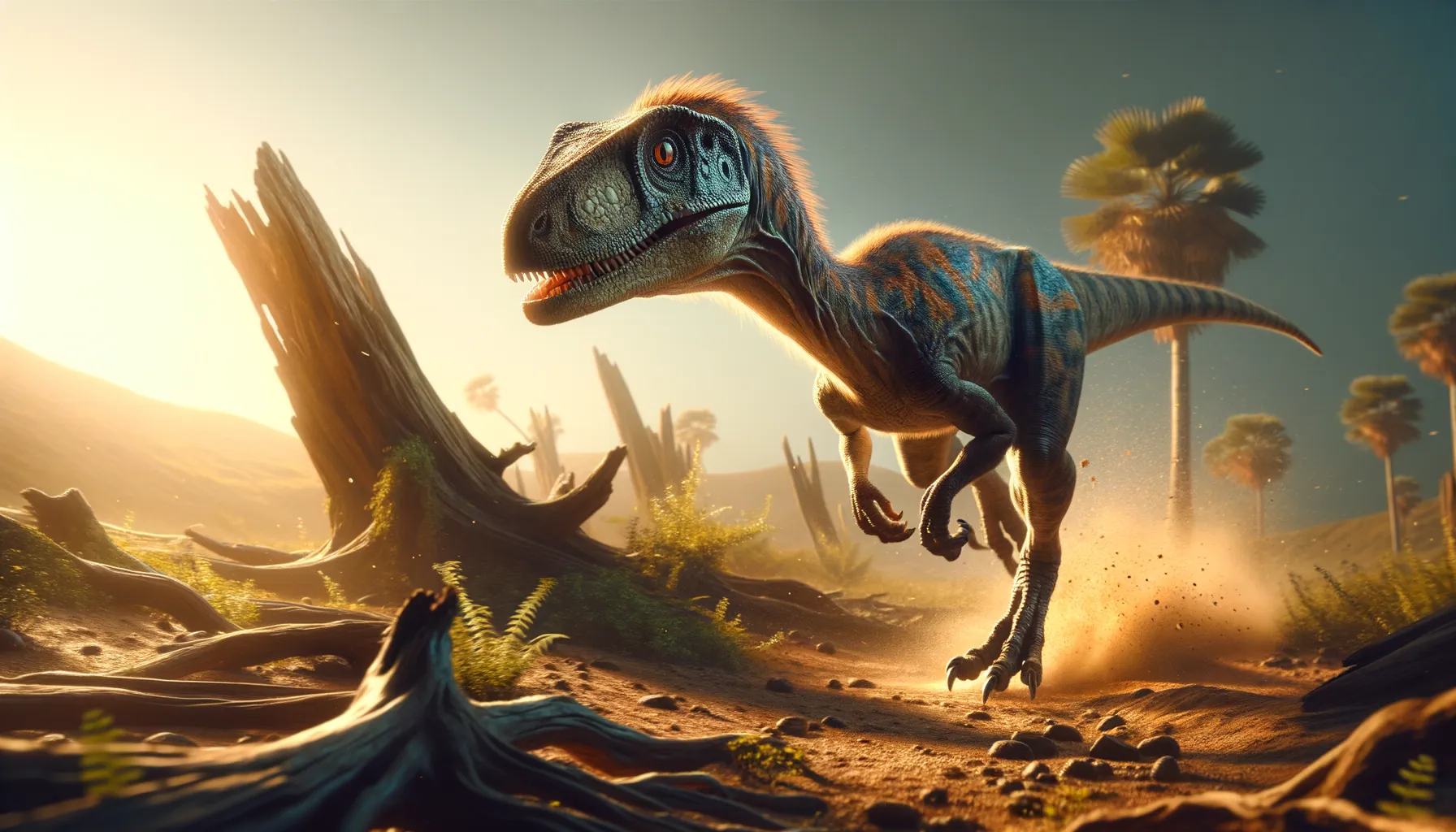
Pamparaptor
Swift predator from the past.
Period
Cretaceous
Length
Roughly 5 feet long.
Height
Around 2.5 feet tall.
Weight
Approximately 33 pounds.
Pamparaptor was a small, agile dinosaur that roamed the Earth during the late Cretaceous period. With a nimble build and sharp senses, it was well-suited for pursuing prey or evading predators. Although not one of the largest dinosaurs, its size and speed made it a cunning survivor in its environment, constantly adapting to the diverse conditions of its habitat.
Diet
Pamparaptor was likely a carnivore, preying on small animals and insects. Its agile nature and sharp teeth suggest it was adept at catching quick-moving prey.
Hunting
Pamparaptor possibly hunted in pairs or small groups, using its speed to outmaneuver its prey. It might have relied on stealth and precision rather than brute force to capture and kill.
Environmental challenges
Pamparaptor faced various environmental challenges, including changing climates and the presence of larger predators. Adapting to fluctuations in food availability was crucial for its survival. The ability to move quickly and be less conspicuous would have been advantageous in avoiding dangers.
Speed
A fast and agile runner.
Lifespan
Lived several decades.
First discovery
Found in Argentina in 2005.
Fun Facts
- Pamparaptor is a dinosaur that roamed the earth during the Late Cretaceous period, roughly 70 million years ago.
- It was a small, bipedal predator, similar in appearance to the more well-known Velociraptor, but much smaller.
- Fossils of Pamparaptor have been discovered in what is now Argentina, giving us clues about its habitat and lifestyle.
- Unlike some of its larger relatives, Pamparaptor was only about the size of a turkey, making it quite petite.
- Its name, Pamparaptor, means 'Pampas thief', referring to the grassy plains where its fossils were found.
- Despite its small size, Pamparaptor was likely a skilled hunter, using speed and agility to catch prey.
- The discovery of Pamparaptor adds to our understanding of the diversity of raptor-like dinosaurs in South America.
Growth and Development
Pamparaptor experienced rapid growth, reaching maturity quickly to maximize its chances of survival. Juveniles were likely more vulnerable but could have used their small size to hide from predators. As they matured, they developed more pronounced features characteristic of their species.
Habitat
Pamparaptor inhabited regions that provided ample cover and diverse food sources, such as forests or woodlands. It likely favored environments where its speed and agility could be fully utilized. Seasonal changes might have influenced its movements, following prey or seeking better conditions.
Interaction with other species
Pamparaptor interacted with both predators and prey within its ecosystem. It had to constantly watch out for larger carnivores, which could overpower it. Competition for resources would have brought it into contact with other small-to-medium-sized dinosaurs.
Natural lifespan
It naturally lived several decades if it survived early predators.
Reproduction
Pamparaptor likely laid eggs, similar to other theropods of its size. Nesting sites may have been chosen carefully to ensure safety from predators. Parental care could have included guarding nests or watching over hatchlings.
Social behaviour
Pamparaptor may have exhibited social behavior, with the possibility of forming small groups for hunting or protection. Cooperative behavior might have increased survival rates in challenging environments.
Fossil locations
Fossil remains of Pamparaptor have been primarily discovered in Argentina. The finds have provided insights into its physical attributes and helped establish its classification among theropods. These locations are key to understanding the diverse ecosystems of the Cretaceous period.
